Amin Javari
Retrieval-Augmented Generation with Graphs (GraphRAG)
Jan 08, 2025



Abstract:Retrieval-augmented generation (RAG) is a powerful technique that enhances downstream task execution by retrieving additional information, such as knowledge, skills, and tools from external sources. Graph, by its intrinsic "nodes connected by edges" nature, encodes massive heterogeneous and relational information, making it a golden resource for RAG in tremendous real-world applications. As a result, we have recently witnessed increasing attention on equipping RAG with Graph, i.e., GraphRAG. However, unlike conventional RAG, where the retriever, generator, and external data sources can be uniformly designed in the neural-embedding space, the uniqueness of graph-structured data, such as diverse-formatted and domain-specific relational knowledge, poses unique and significant challenges when designing GraphRAG for different domains. Given the broad applicability, the associated design challenges, and the recent surge in GraphRAG, a systematic and up-to-date survey of its key concepts and techniques is urgently desired. Following this motivation, we present a comprehensive and up-to-date survey on GraphRAG. Our survey first proposes a holistic GraphRAG framework by defining its key components, including query processor, retriever, organizer, generator, and data source. Furthermore, recognizing that graphs in different domains exhibit distinct relational patterns and require dedicated designs, we review GraphRAG techniques uniquely tailored to each domain. Finally, we discuss research challenges and brainstorm directions to inspire cross-disciplinary opportunities. Our survey repository is publicly maintained at https://github.com/Graph-RAG/GraphRAG/.
Knowledge Graph-based Session Recommendation with Adaptive Propagation
Feb 17, 2024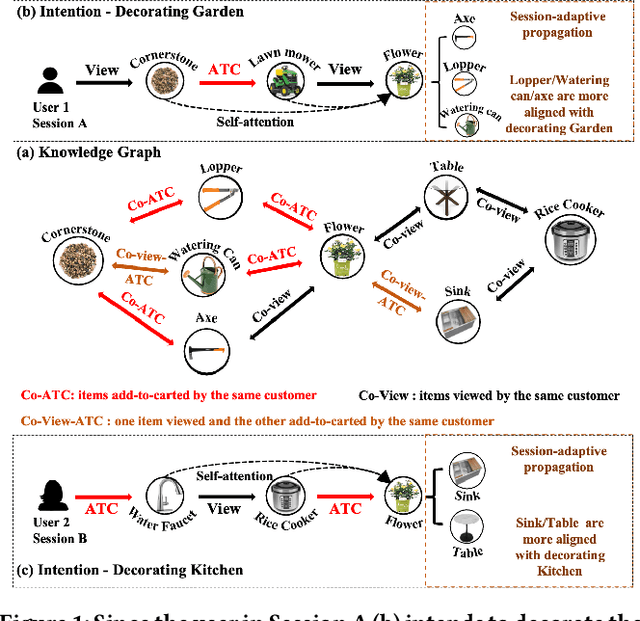
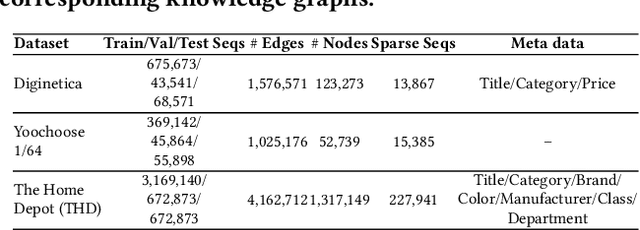
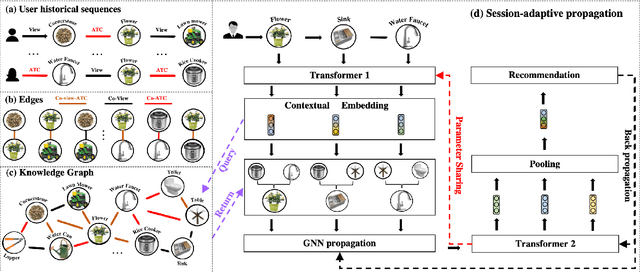
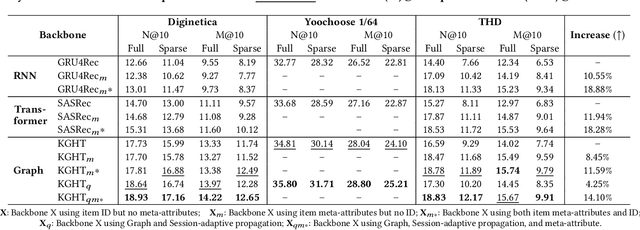
Abstract:Session-based recommender systems (SBRSs) predict users' next interacted items based on their historical activities. While most SBRSs capture purchasing intentions locally within each session, capturing items' global information across different sessions is crucial in characterizing their general properties. Previous works capture this cross-session information by constructing graphs and incorporating neighbor information. However, this incorporation cannot vary adaptively according to the unique intention of each session, and the constructed graphs consist of only one type of user-item interaction. To address these limitations, we propose knowledge graph-based session recommendation with session-adaptive propagation. Specifically, we build a knowledge graph by connecting items with multi-typed edges to characterize various user-item interactions. Then, we adaptively aggregate items' neighbor information considering user intention within the learned session. Experimental results demonstrate that equipping our constructed knowledge graph and session-adaptive propagation enhances session recommendation backbones by 10%-20%. Moreover, we provide an industrial case study showing our proposed framework achieves 2% performance boost over an existing well-deployed model at The Home Depot e-platform.
Enhancing ID and Text Fusion via Alternative Training in Session-based Recommendation
Feb 14, 2024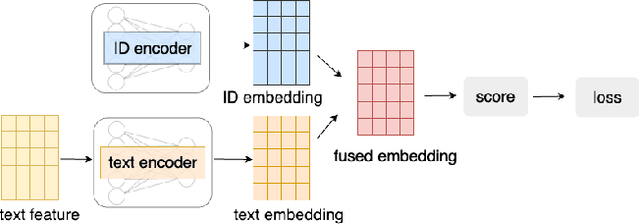
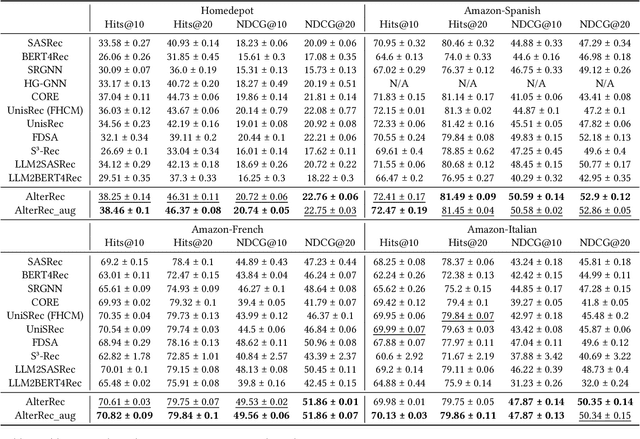


Abstract:Session-based recommendation has gained increasing attention in recent years, with its aim to offer tailored suggestions based on users' historical behaviors within sessions. To advance this field, a variety of methods have been developed, with ID-based approaches typically demonstrating promising performance. However, these methods often face challenges with long-tail items and overlook other rich forms of information, notably valuable textual semantic information. To integrate text information, various methods have been introduced, mostly following a naive fusion framework. Surprisingly, we observe that fusing these two modalities does not consistently outperform the best single modality by following the naive fusion framework. Further investigation reveals an potential imbalance issue in naive fusion, where the ID dominates and text modality is undertrained. This suggests that the unexpected observation may stem from naive fusion's failure to effectively balance the two modalities, often over-relying on the stronger ID modality. This insight suggests that naive fusion might not be as effective in combining ID and text as previously expected. To address this, we propose a novel alternative training strategy AlterRec. It separates the training of ID and text, thereby avoiding the imbalance issue seen in naive fusion. Additionally, AlterRec designs a novel strategy to facilitate the interaction between the two modalities, enabling them to mutually learn from each other and integrate the text more effectively. Comprehensive experiments demonstrate the effectiveness of AlterRec in session-based recommendation. The implementation is available at https://github.com/Juanhui28/AlterRec.
Who will accept my request? Predicting response of link initiation in two-way relation networks
Dec 21, 2020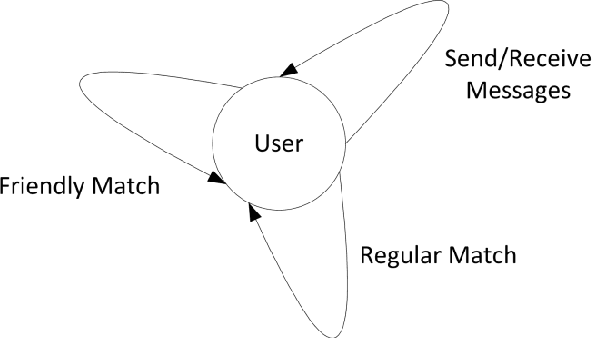

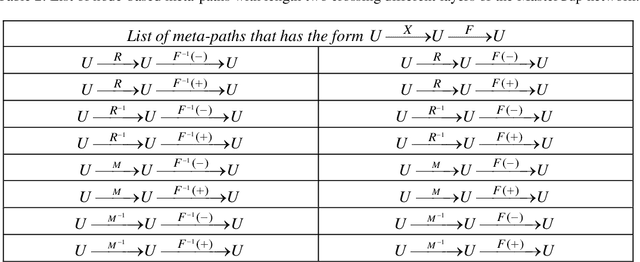
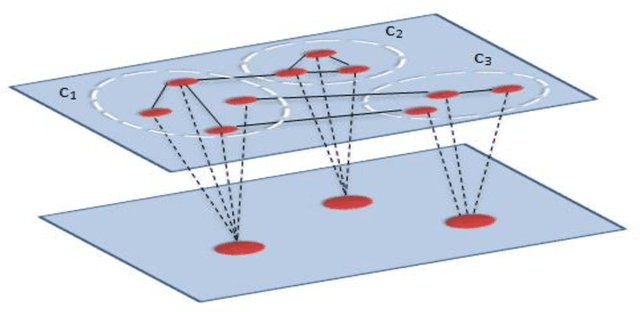
Abstract:Popularity of social networks has rapidly increased over the past few years, and daily lives interrupt without their proper functioning. Social networking platform provide multiple interaction types between individuals, such as creating and joining groups, sending and receiving messages, sharing interests and creating friendship relationships. This paper addresses an important problem in social networks analysis and mining that is how to predict link initiation feedback in two-way networks. Relationships between two individuals in a two-way network include a link invitation from one of the individuals, which will be an established link if it is accepted by the invitee. We consider a sport gaming social networking platform and construct a multilayer social network between a number of users. The network formed by the link initiation process is on one of the layers, while the other two layers include a messaging relationships and interactions between the users. We propose a methodology to solve the link initiation feedback prediction problem in this multilayer fashion. The proposed method is based on features extracted from meta-paths, i.e. paths defined between different individuals from multiples layers in multilayer networks. We proposed a cluster-based approach to handle the sparsity issue in the dataset. Experimental results show that the proposed method can provide accurate prediction that outperforms state-of-the-art methods.
 Add to Chrome
Add to Chrome Add to Firefox
Add to Firefox Add to Edge
Add to Edge